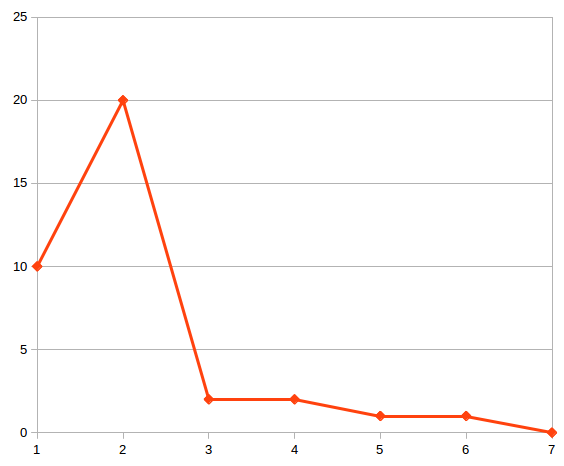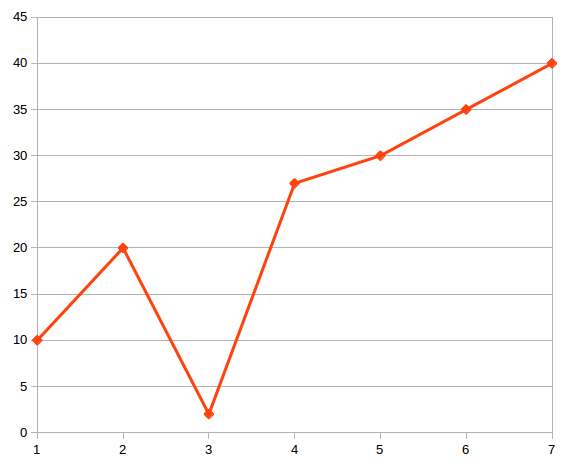Latest news about Bitcoin and all cryptocurrencies. Your daily crypto news habit.
Recently I stumbled upon this interview question on InterviewCake. Basically it goes like this: you have an array of stock prices, and you should calculate the highest profit you could get. For example, you have [2, 1, 4, 10, 7] — the highest profit is 10–4 = 6. What I didn’t like about the problem was that it didn’t require to find minimum and maximum stock prices you could obtain the best profit with, just the highest profit itself. So I decided to solve it with this clause. Besides, I believe it requires to delve into the nature of this problem a bit deeper.
After hanging around and re-reading the problem for I guess half an hour, hoping to come up with a solution, I decided to draw the diagram of how the stock prices evolve.
Here is the simplest beginning:
The best profit I could obtain so far is buy for $10 and sell for $20. How could this graph evolve? Well, there are actually only two scenarios that I’m interested in. If the next price is higher than the previous, I have a new highest price, and new highest profit. And if the next price is lower than the previous lowest price, I potentially have a lowest price that I should buy stock for. But I don’t know if later there will be a price that results in a new highest profit. It could be like that:
or like that:
So I need to introduce a concept of minimum price candidate, that is, a price that could be the one I should buy the stocks for. So when I find myself in point 3, I say that it is a candidate for the next minimum price. And if the stock at point 4 leads to higher profit (or, in other words, the highest so far), I pose that the candidate for minimum price actually becomes a minimum price, and the stock that brings me to the highest profit becomes the maximum price, that is, the price I should sell the stocks for.
So the following code seems fine from the first sight:
function getMaxProfit(array $stocks){ $minCandidate = $min = $stocks[0]; $max = $stocks[1];for ($i = 1; $i < count($stocks); $i++) {if ($stocks[$i] < $minCandidate) { $minCandidate = $stocks[$i]; } elseif ($stocks[$i] - $minCandidate > $max - $min) { $max = $stocks[$i]; $min = $minCandidate; } }return [$min, $max];}But there is a problem. What if stock prices go down the whole day, but the difference between the prices gets lower? For example, with this array — [10, 5, 2, 1] — I get an erroneous result. So I need to calculate the highest profit first, and then refresh $minCandidate if needed:
function getMaxProfit(array $stocks){ $minCandidate = $min = $stocks[0]; $max = $stocks[1];for ($i = 1; $i < count($stocks); $i++) {if ($stocks[$i] - $minCandidate > $max - $min) { $max = $stocks[$i]; $min = $minCandidate; }if ($stocks[$i] < $minCandidate) { $minCandidate = $stocks[$i]; } }return [$min, $max];}That’s it.
Apple stocks interview question was originally published in Hacker Noon on Medium, where people are continuing the conversation by highlighting and responding to this story.
Disclaimer
The views and opinions expressed in this article are solely those of the authors and do not reflect the views of Bitcoin Insider. Every investment and trading move involves risk - this is especially true for cryptocurrencies given their volatility. We strongly advise our readers to conduct their own research when making a decision.



